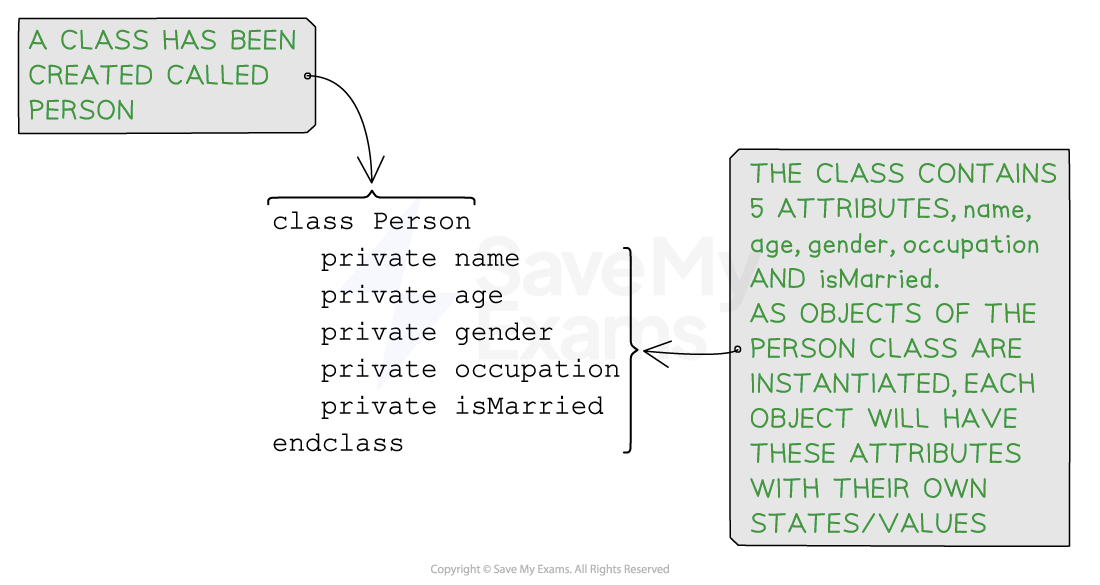Attributes (OOP) (Cambridge (CIE) A Level Computer Science): Revision Note
Exam code: 9618
Attributes (OOP)
What is an attribute?
In object-oriented programming (OOP), an attribute refers to a data member or a property associated with an object or a class
They define the state of an object and can have different values for different instances of the same class
Attributes can be of various data types, such as integers, strings, Booleans, or even other objects
Attributes can have different access rights
The example below shows a Car class object with an attribute called manufacturer
It has a private access meaning that it can be accessed only by instances of the Car class
The data that this attribute will hold must be of the String data type
The image below gives a visual representation of an object of this class being instantiated with a data value of “Ford” :

An example instance of an object
In most cases each class has many different attributes
Below is an example of an object of class "person":

Example of an object of class "person"
Examiner Tips and Tricks
Attributes declared within methods (local variables) cannot have access modifiers because they are local to the method and have a limited scope
Local variables are only accessible within the block or method in which they are declared. They are not part of the class's state and cannot be accessed from other methods or classes
Programming attributes (OOP)
How do you program attributes?
Pseudocode

Example of a created class, "Person", containing several attributes
Java
public class Person {
// Attributes for the person class
private String name;
private int age;
private String gender;
private String occupation;
private boolean isMarried;
}Python
In Python attributes are defined using the
selfkeyword followed by the attribute name and its initial value
class MyClass:
def __init__(self, attribute1, attribute2):
# Define attributes
self.attribute1 = attribute1
self.attribute2 = attribute2
Unlock more, it's free!
Did this page help you?